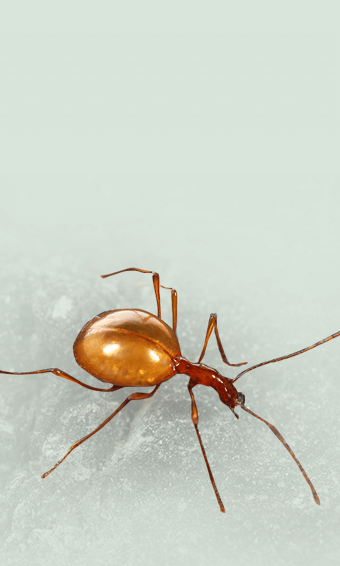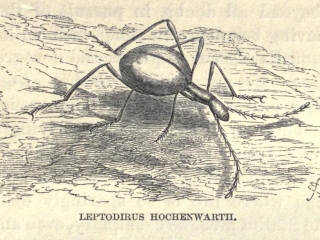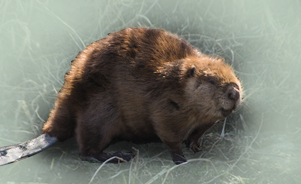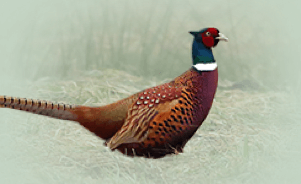The Narrow-Necked Blind Cave Beetle Leptodirus hochenwartii

Features
They prefer to make their homes in large caves, where there is a low temperature and high air humidity. They feed on animal remains.
| Species | Insect |
| Living space | Large caves |
| Size | 8 to 11 mm |
Description
The Narrow-necked blind cave beetle is a small bug that has no eyes or pigment. They have a thin and prolonged bust and a round abdomen where they store food reserves. The head and the chest are small and narrow and protrude from the abdomen. Their antennas and legs are very long, which is one of their adaptations to life in the dark as they are very sensitive to touch and vibration. This enables the narrow-necked blind cave beetle to find food or avoid predators without the use of vision. The narrow-necked blind cave beetle was the second animal described as having completely adapted to cave life, aside from the Human Fish, and, at the same time, is the first known cave invertebrate! The beetle is an endemic of the Slovenian Karst and its surroundings. They are real cave animals that depend on the constant temperature and humidity in the caves, so they cannot survive outside a cave environment. Upon the beetle's discovery, researchers realized that life existed below ground.The Narrow-Necked Blind Cave Beetle
on the habitat Temenica
The beetle is located in a cave near the third spring of the disappearing Temenica River, which is already, geographically, part of the habitat of the Ajdovska planota.

Features Temenica (3)
SPECIAL ogr.




